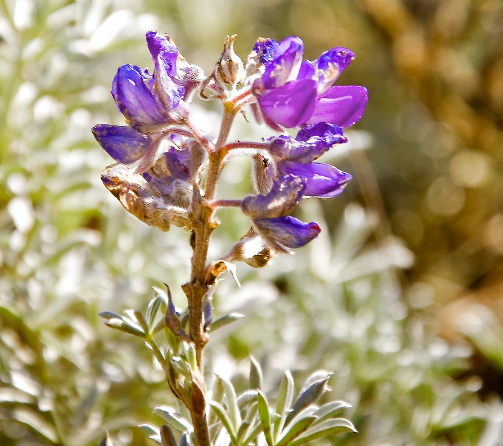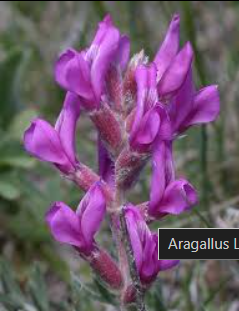ARAGALLUS LAMBERTI Q, 6C, 12C, 30C, 200C, 1M, 10M USES AND SYMPTOMS
 Aragallus lamberti, commonly known as White Locoweed or Rattle Weed, primarily affects the nervous system, inducing a state of confusion and bewilderment. It manifests symptoms of incoordination, paralysis, and locomotor ataxia, along with morning fatigue.
Aragallus lamberti, commonly known as White Locoweed or Rattle Weed, primarily affects the nervous system, inducing a state of confusion and bewilderment. It manifests symptoms of incoordination, paralysis, and locomotor ataxia, along with morning fatigue.
Mind: Profound morning or evening depression hindering study efforts. Irritability, restlessness, and cross demeanor prevail. Mental fog and apathy dominate, with a preference for solitude. Concentration difficulties, absentmindedness, and a lack of ambition are notable. Writing expression suffers. Restlessness prompts aimless wandering, requiring concentrated walking.
Eyes: Diplopia and burning sensation in the eyes occur.
Face: Lower lip cracking is observed.
Throat: Aching, fullness, soreness with nausea, and dark, swollen, glazed pharynx indicate inflammation.
Respiratory: Chest weight near the ensiform cartilage, a sensation of constriction like a broad band across the chest, soreness under the sternum, and oppression are reported.
Extremities: Limb weakness, left sciatic nerve pain, and leg muscle cramps while walking are notable.
Relationship: Compare with Astragalus Lamberti or Oxyt., another variety of Locoweed, and Bar-c.
Dose: Utilize sixth and two hundredth potencies.
SYMPTOMS OF ARAGALLUS LAMBERTI
Mind:
Severe depression, particularly in the morning or evening, hindering study.
Irritability, restlessness, and cross demeanor.
Mental confusion, apathy, and a preference for solitude.
Difficulty concentrating, absentmindedness, and lack of ambition.
Impaired writing expression.
Restlessness leading to aimless wandering, requiring concentrated walking.
Eyes:
Diplopia (double vision) and burning sensation in the eyes.
Face:
Cracking of the lower lip.
Throat:
Aches, feeling full, soreness with nausea, and a dark, swollen, glazed pharynx indicating pharyngitis.
Respiratory:
Weight on chest near ensiform cartilage, sensation of constriction like a wide band across the chest, soreness under sternum, and oppression.
Extremities:
Weakness of limbs, pain in left sciatic nerve, and leg muscle cramps while walking.
Relationship:
Comparable to Astragalus Lamberti or Oxyt., another variety of Locoweed, and Bar-c.
Dose:
Use sixth and two hundredth potencies.
selection of the potency
Individualization:
- Homeopathy is based on the principle of treating the individual, not just the disease. The unique symptoms and characteristics of the person are crucial in determining the most suitable potency.
Intensity of Symptoms:
- The intensity of the symptoms guides the choice of potency. If the symptoms are intense and acute, a lower potency (e.g., 6C, 30C) might be considered. For chronic conditions with less intensity, higher potencies (e.g., 200C, 1M) may be appropriate.
Sensitivity of the Patient:
- Some individuals are more sensitive to homeopathic remedies, while others may require higher potencies. The practitioner considers the patient’s sensitivity when selecting the potency.
Acute vs. Chronic Conditions:
- Lower potencies are often used for acute conditions, while higher potencies may be considered for chronic or long-standing issues.
Previous Response to Potencies:
- The patient’s response to previous homeopathic treatments helps guide the choice of potency. If a particular potency has been effective in the past, it may be repeated or adjusted as needed.
Vital Force and Susceptibility:
- Homeopathy views illness as a disturbance in the vital force. The practitioner assesses the patient’s overall vitality and susceptibility to determine the appropriate potency.
Aggravation or Amelioration:
- The direction of the symptom response (aggravation or amelioration) after taking a remedy can influence the choice of potency.
Miasmatic Considerations:
- In classical homeopathy, the concept of miasms (inherited disease tendencies) is considered. The practitioner take this into account when selecting the potency.
Practitioner Experience:
- The experience and preference of the homeopathic practitioner play a role. Some practitioners may have success with certain potencies based on their clinical experience.
SAFETY INFORMATION
- Do not exceed the recommended dose by physician
- Keep out of the reach of children
- Store in a cool dry place away from direct sunlight
- Maintain half an hour gap between food/drink/any other medicines and homoeopathic medicine
- Avoid any strong smell in the mouth while taking medicine e.g. camphor, garlic, onion, coffee, hing
Medicine images use for reference only selection of homeopathic medicine depends on the individual’s specific symptoms and overall constitution. Moreover, homeopathy is a holistic system of medicine that treats the individual as a whole. In addition to addressing the physical symptoms, it takes into account the emotional and mental state of the person. Consequently, it’s crucial to consult with a qualified homeopathic practitioner for personalized treatment.
The information provided on this website is intended solely for educational purposes. Always seek the advice of your physician or other qualified health provider.
